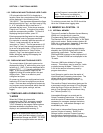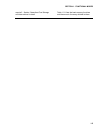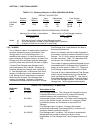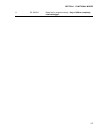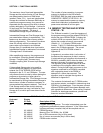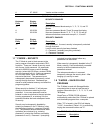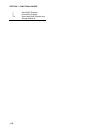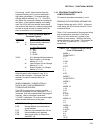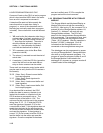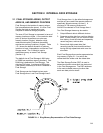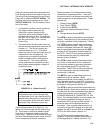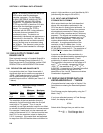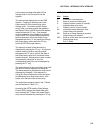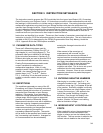SECTION 1. FUNCTIONAL MODES
1-12
LOAD PROGRAM FROM ASCII FILE
Command 2 sets up the CR10 to load a program
which is input as serial ASCII data in the same
form as sent in response to command 1.
A download file need not follow exactly the
same format that is used when listing a
program (i.e., some of the characters sent in
the listing are not really used when a program
is loaded). Some rules which must be followed
are:
1. "M" must be the first character other than a
carriage return, line feed, semicolon, or 7D
Hex. The "M" serves the same function as
"*" does from the keyboard. The order in
which the Modes are sent in does not
matter (i.e., the information for Mode 3
could be sent before that for Mode 1).
2. "S" is necessary prior to the Scan Rate
(execution interval).
3. The colons (:) are used to mark the start of
actual data.
4. A semicolon (;) tells the CR10 to ignore the
rest of the line and can be used after an
entry so that a comment can be added.
There are 4 two-character control codes which
may be used to verify that the CR10 receives a
file correctly:
^B ^B (2hex, 2hex)--Discard current buffer
and reset signature
^C ^C (3hex, 3hex)--Send signature for
current buffer
^D ^D (4hex, 4hex)--Load current buffer and
reset signature
^E ^E (5hex, 5hex)--Load current buffer, Exit
and compile program
As a download file is received, the CR10
buffers the data in memory; the data is not
loaded into the editor or compiled until the
CR10 receives a command to do so. The
maximum size of the buffer is 1.5K. The
minimum file that could be sent is the program
listing, then ^E ^E. ^C ^C tells the CR10 to
send the signature (Appendix C.3) for the
current buffer of data. If this signature does not
match that calculated by the sending device,
^B ^B can be sent to discard the current buffer
and reset the signature. If the signature is
correct, ^D ^D can be sent to tell the CR10 to
load the buffer into the editor and reset the
signature. Once the complete file has been
sent and verified, send ^E ^E to compile the
program and exit the load command.
1.8.2 PROGRAM TRANSFER WITH STORAGE
MODULE
The Storage Module and Keyboard/Display or
Modem/Terminal must both be connected to
the CR10. After keying *D, the command 7N, is
entered (N is the Storage Module address 1-8,
Section 3.3). Address 1 will work with any
Storage Module address. The CR10 will
search for the lowest address Storage Module
that is connected. The command to save, load,
or clear a program and the program number
(Table 1.8-2) is entered. After the operation is
finished "13:0000" is displayed. Error 96
indicates that the Storage Module is not
connected or the wrong address was given.
The datalogger can be programmed on power-
up using a Storage Module. Storage Modules
can store up to eight separate programs. If a
program is stored as program number 8, and if
the Storage Module is connected to the
datalogger I/O at power-up, program number 8
is down loaded to the datalogger.



